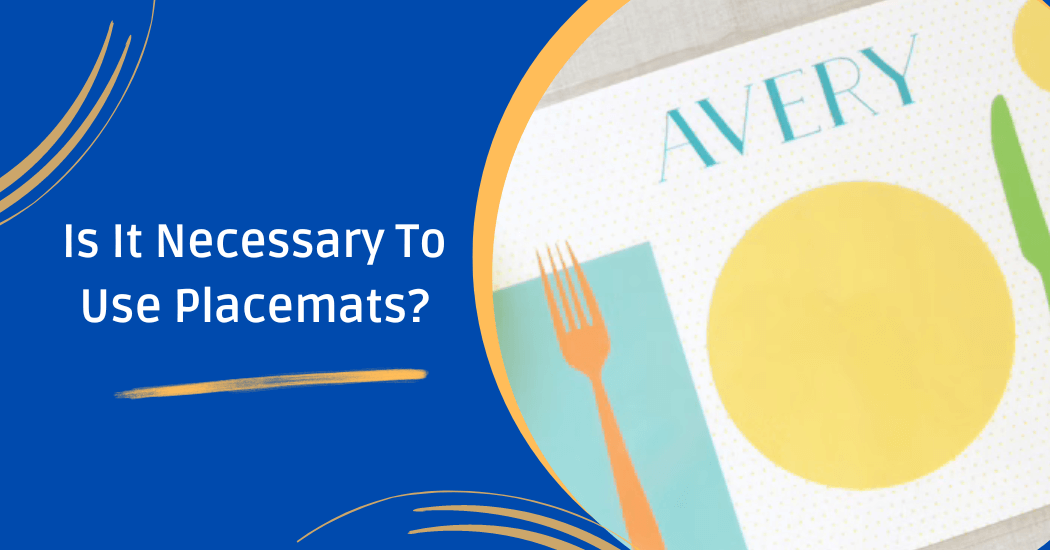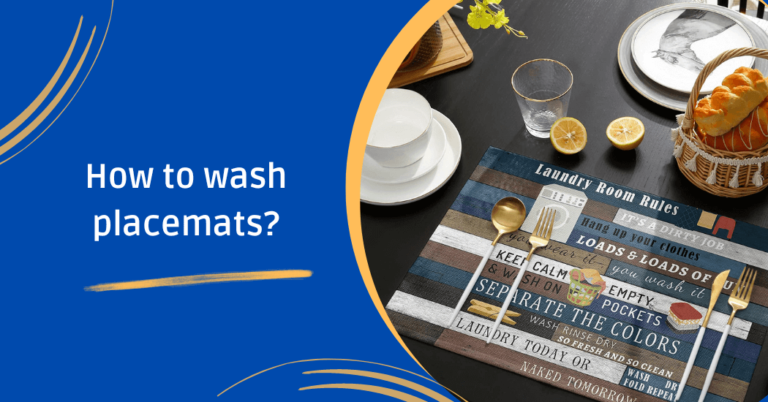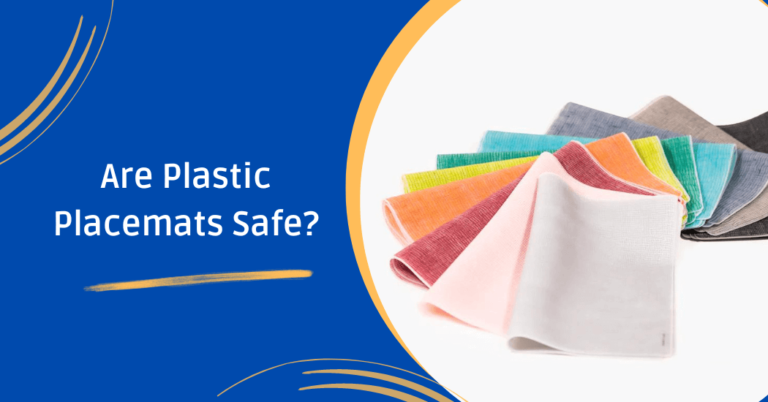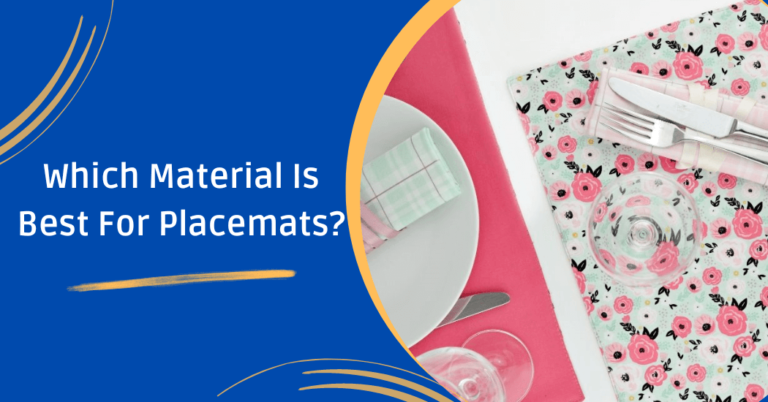Is it necessary to use placemats?
When it comes to setting a table, one often encounters the question: Is it necessary to use placemats or can I set a table without them? Placemats, those flat, often decorative mats placed under dinnerware, have been a staple of table settings for generations.
However, in today’s modern world, where minimalism and convenience often reign supreme, the role and necessity of placemats have come into question.
In this discussion, we will explore the pros and cons of using placemats and consider whether they are truly essential for a well-arranged table setting or if they can be omitted without sacrificing style or functionality.
Is it necessary to use placemats?
Placemats are not strictly necessary but they can serve as practical and decorative additions to your dining table. However, despite their decorative value, placemats are a practical item that can provide several benefits for both formal and casual dining experiences.
For starters, they protect the table from heat damage caused by hot plates or other dishes. They can also be used to absorb condensation from cold beverages, thus preventing the table surface from becoming wet and slippery.
Finally, placemats provide a buffer between the plate and tablecloth, which can help prevent staining or build-up of dirt and grime on lighter material. The answer to this question ultimately depends on the individual’s preference, as there is no hard and fast rule when it comes to table setting.
Can I set a table without placemats?
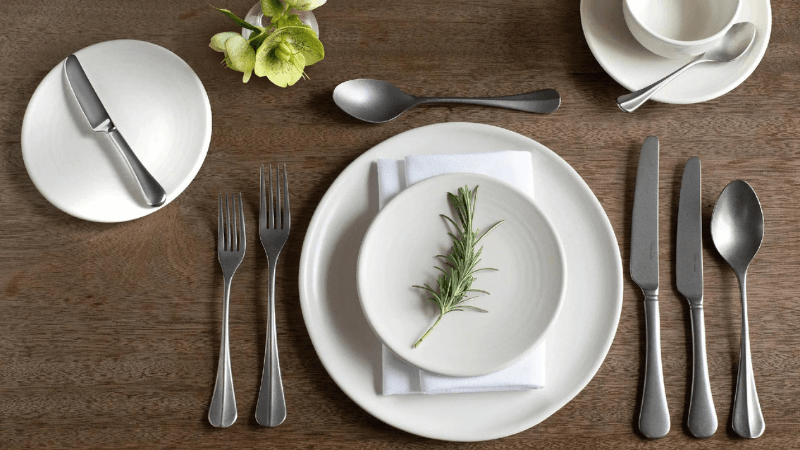
Yes, it is possible to set a table without placemats. In some cases, the use of placemats may not be necessary or even desired. For example, in an informal setting such as a breakfast nook or picnic, the use of placemats can detract from the casual ambiance.
Placemats offer practical benefits like protecting your table and adding a decorative element, they are not essential to a table setting.
Instead, you may opt for a tablecloth, runners or simply let the beauty of your table shine through. It is ultimately a matter of personal preference and the formality of the occasion. You can experiment with different settings and find what reflects your style and meets your needs best.
Also Read: What can I use instead of placemats?
Factors to consider when setting a table without placemats
Setting a table without placemats requires careful consideration of various factors to ensure the table looks appealing and serves its purpose effectively.
Here are some important factors to consider:
- Type of Dining Occasion (Formal or Informal): The type of dining occasion should be taken into account when setting the table. For a more formal gathering, tables should be set with matching cutlery, napkins and decor pieces.
- Tableware: Tableware, such as plates, bowls and glasses, should be chosen carefully to suit the occasion. A combination of both modern and traditional tableware can be used to create a unique and attractive look.
- Color Scheme: The colors of the tableware, napkins and other decor pieces should complement each other to give a cohesive look.
- Cutlery Placement: Each cutlery item should be placed in its designated place with the handles facing the plate for easy access by guests.
- Personal Preferences and Style: Your taste and style should guide the table setting. Consider the color palette, themes and aesthetics that resonate with you and your guests. This will help create a more enjoyable dining experience.
Advantages and disadvantages of using placemats
Advantages
- Aesthetic Appeal: Placemats elevate the dining ambiance with their elegance and sophistication. They add a dash of style aligning with the restaurant’s theme and creating a pleasing visual impact.
- Table Protection: Placemats guard tables against spills, stains and scratches, reducing the need for frequent repairs and augmenting the tables’ longevity.
- Easy Cleanup: Placemats simplify the cleanup process, saving time and effort for staff and allowing for better service.
- Customization: Placemats offer numerous customization possibilities for branding, making them a versatile marketing tool that reinforces brand identity.
- Enhanced Guest Experience: Providing a comfortable surface and acting as conversation starters, placemats contribute to a pleasant dining experience.
Disadvantages
- High Maintenance: Placemats must be regularly cleaned and replaced between each guest, making them somewhat time-consuming to manage.
- Potential Tripping Hazard: The placement of placemats at the edge of a table can cause an obstruction, leading to tripping hazards for both guests and staff.
- Low Durability: Placemats made of paper or materials like flimsy plastic are not durable and can easily tear, requiring frequent replacements.
- Cost: Although the cost of placemats depends on their quality and quantity, the overall cost may prove to be high since they need to be replaced regularly.
- Unattractive Appearance: If not chosen and maintained properly, placemats can give a bad impression of the restaurant and make it appear unprofessional.
Final Words
In conclusion, the use of placemats at a dining table is a matter of personal preference and practicality. While they can add aesthetic appeal and protect your table from heat, spills and scratches, they are not an absolute necessity.
You can certainly set a table without placemats if you prefer a more minimalist look or find them cumbersome. Ultimately, the decision to use placemats or not should be based on your style, the occasion and the level of protection and decoration you desire for your dining setup.
Whether you choose to incorporate placemats or not, what truly matters is creating an enjoyable and comfortable dining experience for yourself and your guests.
